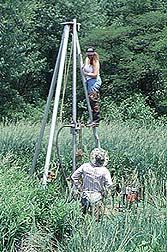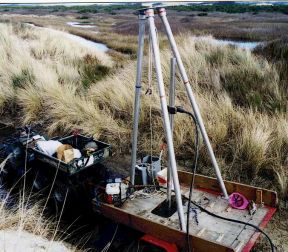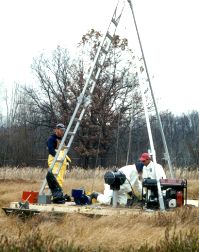Land deployments |
It may be possible to vibracore soils in dry land situations provided certain conditions are met. The reasons for vibracoring there as opposed to drilling or geoprobe sampling might be to obtain a continuous "undisturbed" core of larger volume, which can be transported intact to some facility for study. (The volume of a 4-in. (10-cm) diameter core is approximately two quarts (liters) per foot or 30 cm.) In order for vibracoring to work properly the soil must be saturated just below the surface or else can be flooded with water around the tube as the coring proceeds. Extra weight applied to the unit may also help. When withdrawing the core (with vibration stopped), the tube above ground should be filled with water and capped to optimize suction at the bottom end. In some instances very soft and loose substrates, such as wood pulp or sludge, can still be vibracored even when essentially dry. Preliminary probing with a narrow pipe or rod can indicate how successful vibracoring is likely to be. |
AScI Corporation |
Bucknell College |



Northwest Geoscience |